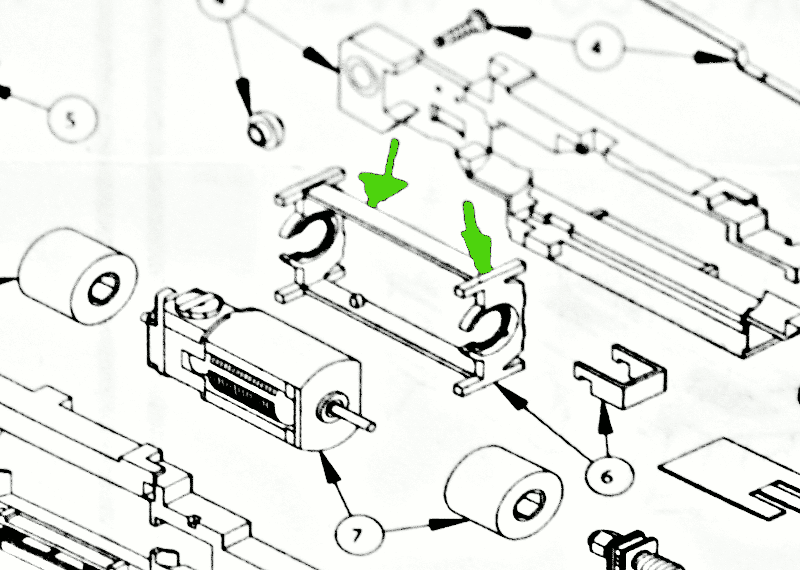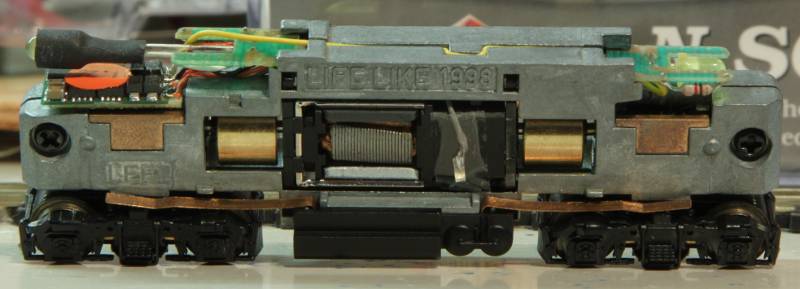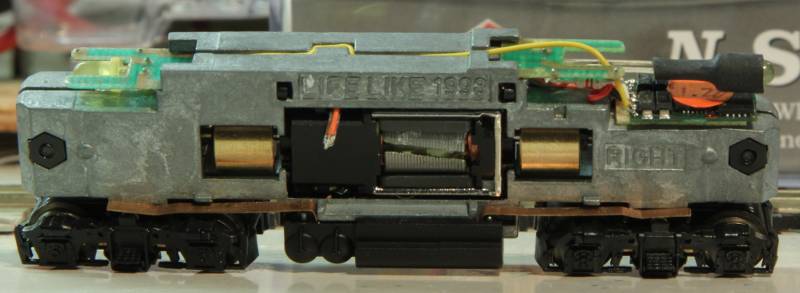Slow
Since last summer I had a LifeLile GP18 in a box, I got it for a reasonable amount in one of Chicago's suburbs. It is not plug and play for DCC. I first tried with a Digitrax DZ123 decoder, but I found out the hard way that it was 0.7mm (that's approx 7/256 inch or 27 mil for the imperialists) too wide for the intended space between gearbox and lamp in the short hood. On the other hand, I had a Döhler&Haas DHP160 lying around which was a perfect fit for the width of the hood. Not much space left to solder the wires, but as you can see it was fine.

The cables to the motor are hidden between the halves of the frame.
They have enough room if the plastic motor bracket is modified a
little with a sharp knive. See arrows. The leads are soldered directly
to the motor connectors. Small pieces of tape are tucked in between
motor and frame for insulation.
Only real thin decoder cables fit between the frame halves. The decoder itself is fastened with double sided adhesive tape. It takes the incoming power from the solder pads on the inside of the LED board.

Both negative LED leads are cut on the circuit board and connected to the white/yellow function wires. The yellow cable fits into the groove between the frame halves. The current limiting resistor of the LED stays as is. The LEDs that come with this model are more in the yellowish range. This could be improved with sunny- or golden-white LEDs but as this is one of my more older style diesels, I find the color good enough.

I adjusted the motor steering CVs to the following values:
| Motor steering | CV | Value | Default | GP18 my recommendation | Comments |
|---|---|---|---|---|---|
| Maximum speed | 5 | 0..127 | 92 | 127 | Default means limited top speed |
| Impulse width | 49 | 0..3 | 1 | 0 | 0: smallest ... 3: widest |
| Speed feedback loop (BEMF) | 50 | 0..3 | 2 | 2 | 0: hardest ... 3: softest |
On the lowerst speed step, the "speed" is a whopping 100 yards per hour (caculated to prototype 1:1)